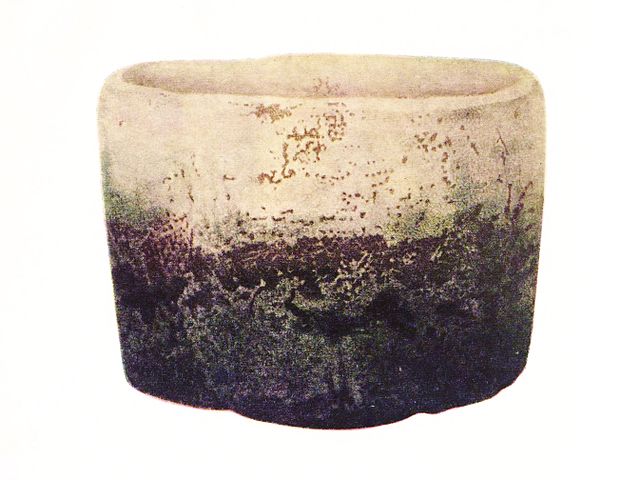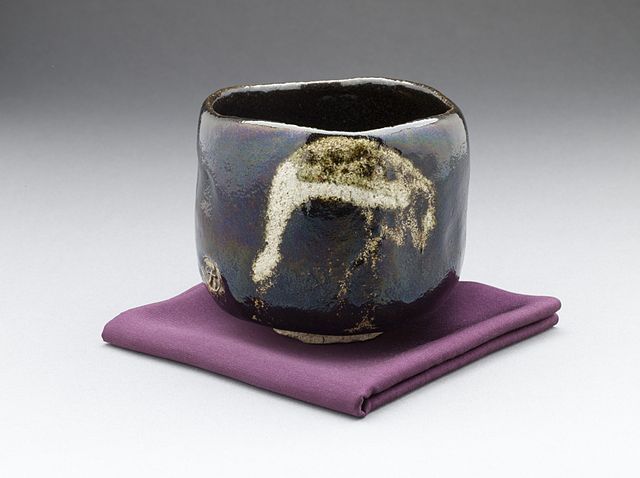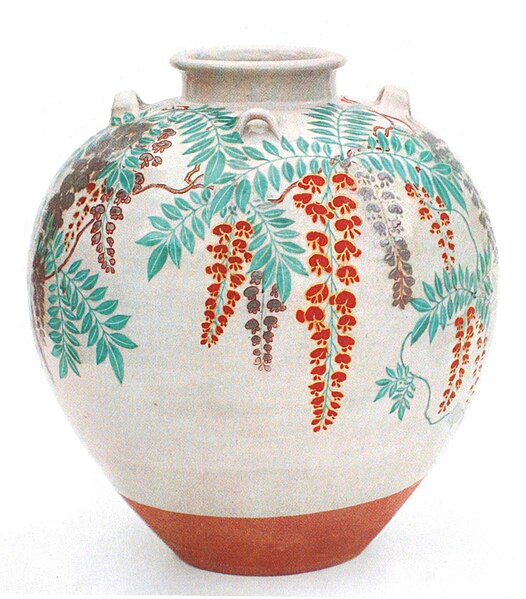Raku ware is a type of Japanese pottery traditionally used in Japanese tea ceremonies, most often in the form of chawan tea bowls. It is traditionally characterised by being hand-shaped rather than thrown, fairly porous vessels, which result from low firing temperatures, lead glazes and the removal of pieces from the kiln while still glowing hot. In the traditional Japanese process, the fired raku piece is removed from the hot kiln and is allowed to cool in the open air.
White Raku teabowl Fuji-san (Mount Fuji) by Honami Kōetsu, Edo period, 17th century. National Treasure.
The final phase in the Western technique
Black Raku-style chawan, used for thick tea, Azuchi–Momoyama period, 16th century
Black Raku teabowl "aged pine (shōrei) with crane design by Raku IX (Ryōnyū), Edo period, c. 1810–1838
Japanese pottery and porcelain
Pottery and porcelain is one of the oldest Japanese crafts and art forms, dating back to the Neolithic period. Kilns have produced earthenware, pottery, stoneware, glazed pottery, glazed stoneware, porcelain, and blue-and-white ware. Japan has an exceptionally long and successful history of ceramic production. Earthenwares were made as early as the Jōmon period, giving Japan one of the oldest ceramic traditions in the world. Japan is further distinguished by the unusual esteem that ceramics hold within its artistic tradition, owing to the enduring popularity of the tea ceremony.
"Fujisan" white Raku ware tea bowl (chawan) by Hon'ami Kōetsu, Edo period (National Treasure)
Tea-leaf jar with a design of wisteria by Nonomura Ninsei, Edo period (National Treasure)
Jōmon pottery flame-style (火焔土器, kaen doki) vessel, 3000–2000 BC, attributed provenance Umataka, Nagaoka, Niigata
Haniwa warrior in keiko armor, Kofun period, 6th century (National Treasure)







